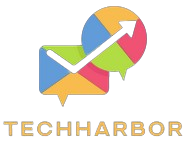Introduction
In a transformative move that highlights its commitment to advancing quantum computing, Microsoft has recently announced the expansion of its Azure quantum computing partnerships across the United States. This initiative aims to accelerate the development of quantum solutions, enhancing the capabilities of businesses and researchers alike. As the quantum landscape evolves, this expansion not only signifies technological progress but also underscores the importance of collaboration in the realm of quantum computing.
The Evolution of Quantum Computing
Quantum computing represents a paradigm shift in our approach to processing information, leveraging the principles of quantum mechanics to perform calculations far beyond the capabilities of classical computers. This technology has the potential to solve complex problems in various fields, including cryptography, materials science, and artificial intelligence.
A Brief Historical Context
The journey of quantum computing began in the 1980s with pioneers like Richard Feynman and David Deutsch, who introduced the concept of a quantum computer. Since then, advancements have been made, leading to the development of algorithms such as Shor’s and Grover’s, which promise exponential speedups for specific tasks. In recent years, major tech companies and research institutions have invested heavily in quantum technologies, recognizing their transformative potential.
The Role of Microsoft in Quantum Computing
Microsoft has been at the forefront of quantum computing research and development, launching Azure Quantum in 2020. Azure Quantum is an open cloud ecosystem that provides access to various quantum hardware and software solutions, enabling developers and researchers to build and test quantum applications. The expansion of partnerships within this framework is a strategic move to consolidate Microsoft’s position as a leader in the quantum space.
Details of the Partnership Expansion
The recent expansion involves collaboration with various universities, research institutions, and private sector companies across the United States. This initiative aims to foster innovation, enhance research capabilities, and create a robust quantum ecosystem.
Key Partners Involved
- Research Institutions: Collaboration with leading research institutions like MIT and Caltech will facilitate advanced studies in quantum algorithms and hardware development.
- Universities: Partnerships with universities such as Stanford and Harvard will promote education and training in quantum computing, equipping the next generation of engineers and scientists.
- Private Sector Companies: Collaborations with companies in sectors like finance, healthcare, and logistics will explore practical applications of quantum computing, driving innovation in these fields.
Goals of the Partnership Expansion
The primary goals of this partnership expansion include:
- Accelerating Research: By pooling resources and expertise, these partnerships aim to advance the pace of research in quantum computing.
- Developing Applications: Focusing on real-world applications, partners will work together to create solutions that address complex problems faced by industries today.
- Enhancing Education: By collaborating with educational institutions, Microsoft seeks to foster a skilled workforce adept in quantum technologies.
Implications for the Future of Quantum Computing
The expansion of Azure quantum computing partnerships has far-reaching implications for the future of this technology. As these collaborations take shape, several outcomes are anticipated:
1. Increased Innovation
With diverse expertise and resources pooled together, innovation in quantum algorithms and hardware is likely to accelerate. This could lead to groundbreaking discoveries and advancements in various fields.
2. Practical Applications
As companies begin to implement quantum solutions, we may witness the emergence of practical applications that significantly enhance business operations, improve decision-making, and optimize processes.
3. Workforce Development
By emphasizing education and training in quantum computing, Microsoft and its partners will contribute to the development of a skilled workforce capable of driving future advancements in this exciting field.
Challenges Ahead
Despite the promising outlook, the journey of quantum computing is not without its challenges. Some of the main obstacles include:
- Technical Hurdles: Developing stable qubits and error-correction methods remains a significant challenge in building practical quantum computers.
- Scalability: As quantum systems become more complex, scaling them to perform useful computations will require innovative engineering solutions.
- Regulatory Framework: Establishing a regulatory framework that addresses ethical concerns and security implications of quantum technologies will be necessary as they become more widely adopted.
Conclusion
Microsoft’s expansion of Azure quantum computing partnerships in the U.S. marks a significant step towards realizing the full potential of quantum technologies. By fostering collaboration among researchers, educators, and industry leaders, Microsoft is paving the way for innovation and practical applications that could revolutionize various sectors. As we move forward, the combined efforts of these partnerships will undoubtedly shape the trajectory of quantum computing, driving us closer to a future where quantum solutions are integrated into our everyday lives.
Looking Ahead
As we look ahead, it is essential to monitor the developments arising from these partnerships. The coming years will likely reveal exciting advancements in quantum computing, proving that collaboration is key to overcoming challenges and unlocking the potential of this groundbreaking technology.

